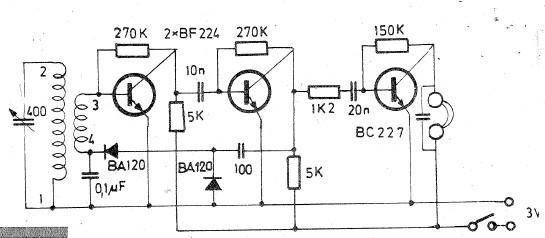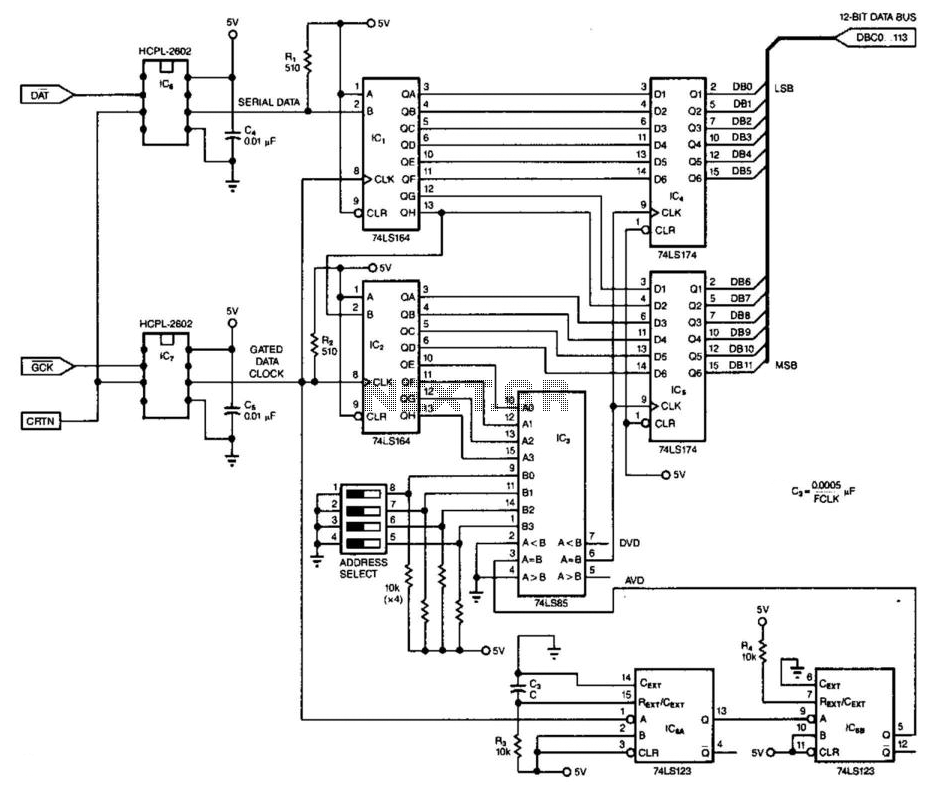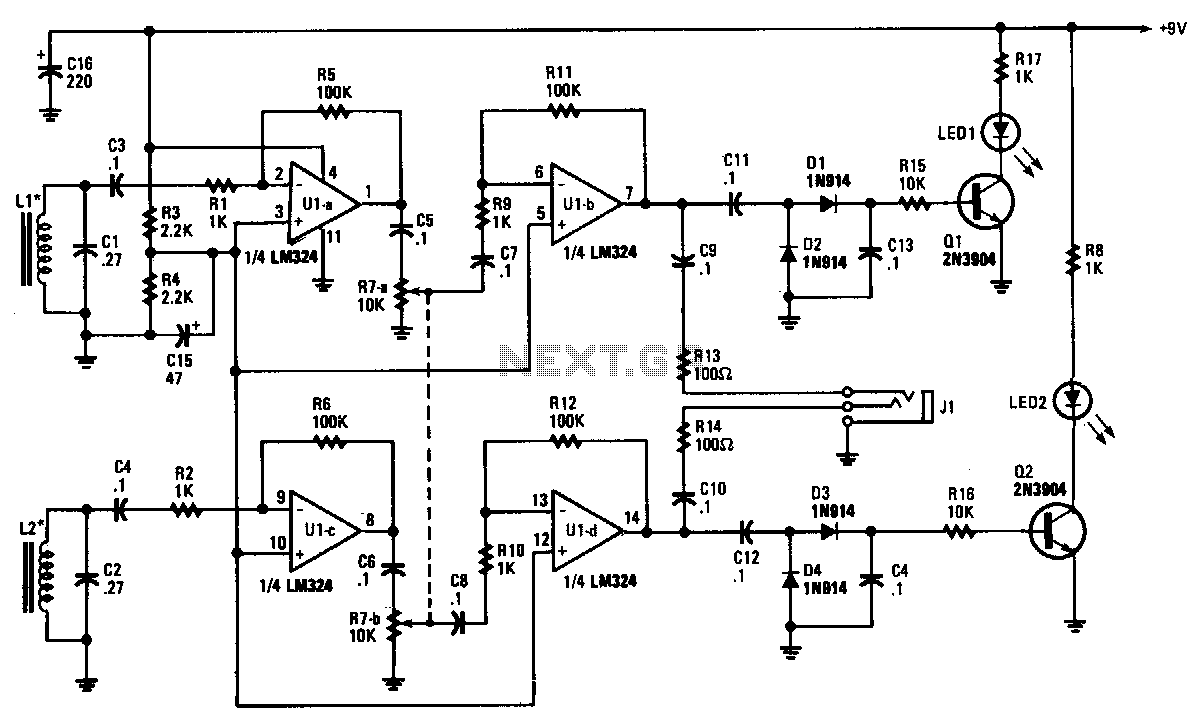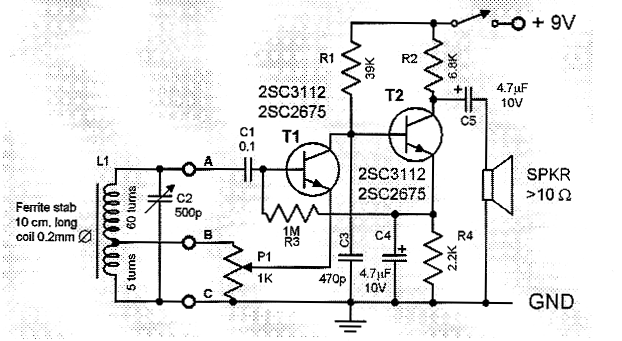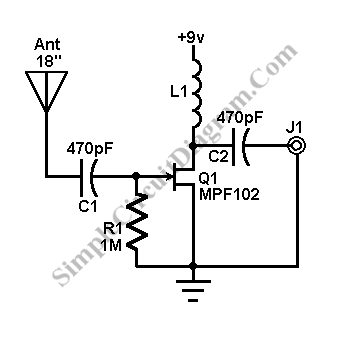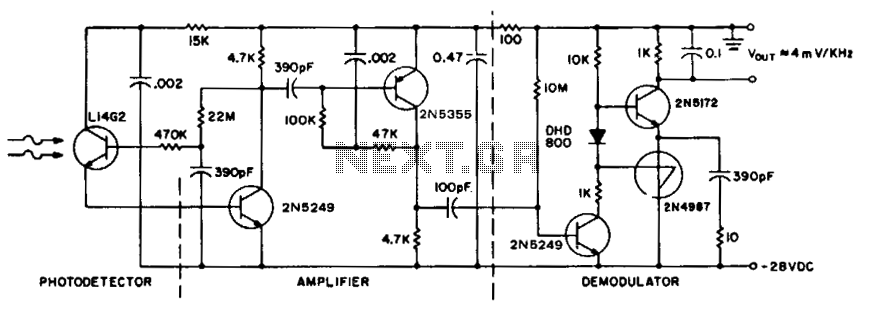
136 kHz QRSS receiver
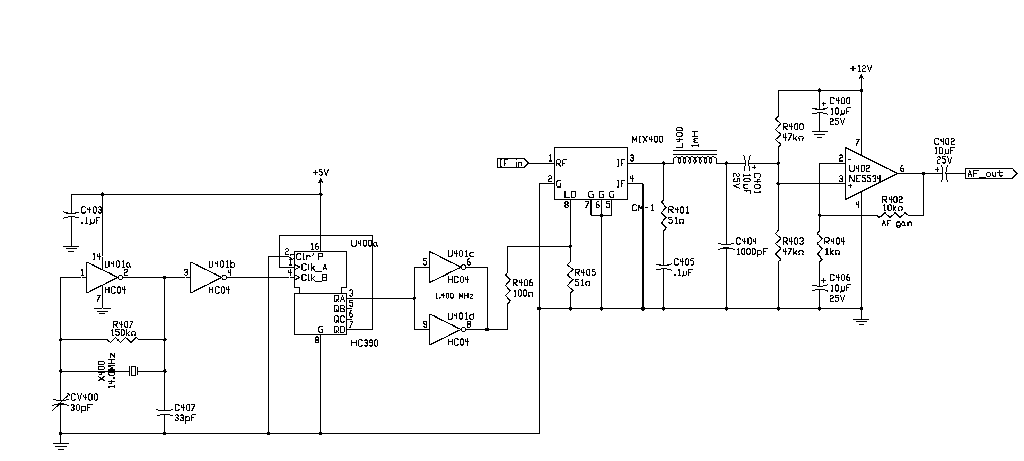
For digital modes, the ideal receiver should be straightforward, featuring front-end selectivity, manually adjustable gain, and an IF filter. Many functionalities found in HF receivers can be implemented through software. In the collection of components, there was a surplus 1.4 MHz, 3 kHz wide crystal filter, which is too large for SSB equipment but suitable for passing the entire 136 kHz band, along with some DBM mixers. Transistor Q100 provides gain and compensates for filter and mixer losses. If intermodulation issues arise, a 6 to 10 dB attenuator should be inserted between C104 and MIX100. A knob is utilized to adjust the gain via V300. It is important to ensure that the gain adjusting voltage does not fall below 2.0 V; otherwise, the CA3328 may function as an "attenuator and noise generator," leading to significant troubleshooting time.
The described circuit outlines a simple yet effective receiver design intended for digital modes, utilizing a combination of analog components and software capabilities. The front-end selectivity is crucial for filtering out unwanted signals, allowing the receiver to focus on the desired frequency range. The use of a 1.4 MHz crystal filter, despite its size, indicates a design choice that prioritizes bandwidth over size, ensuring that the receiver can effectively handle the 136 kHz band.
Transistor Q100 plays a pivotal role in this circuit, serving as a gain stage that enhances the signal coming from the crystal filter and compensates for any losses incurred in the filtering and mixing stages. The inclusion of a manual gain adjustment via a knob linked to V300 allows for user control over the signal strength, which is essential in optimizing performance based on varying signal conditions.
The recommendation to insert a 6 to 10 dB pad between C104 and MIX100 in the case of intermodulation problems highlights the importance of maintaining signal integrity throughout the processing stages. This additional attenuation can help mitigate distortion and improve overall receiver performance.
The operational voltage requirement for the gain adjustment circuit is a critical design consideration. Ensuring that the voltage remains above 2.0 V is necessary to prevent the CA3328 from degrading into an attenuator and noise generator. This aspect underscores the importance of voltage levels in maintaining the desired functionality of the circuit and avoiding unnecessary troubleshooting.
Overall, the described receiver design effectively combines analog components with user-adjustable features, providing a robust solution for digital mode reception while leveraging existing hardware and software capabilities.For digital modes the ideal receiver must be very simple, front end selectivity, manually adjustable gain, IF filter. All the goodies you can find on the HF receivers can be done by software. In my junk box there were one surplus 1. 4 MHz, 3 kHz wide Xtal filter, too large for SSB equipments but ready to pass all the 136 kHz band, and some DBM mixe
rs. Transistor Q100 provide some gain and compensate for filter and mixer loss. If you have intermodulation problems, insert a 6 to 10 dB pad between C104 and MIX100. The knob is used to adjust the gain by means of V300. Note that the gain adjusting voltage must not be less than 2. 0 V, otherwise the CA3328 become an "attenuator and noise generator" (2 hours lost time!). 🔗 External reference
The described circuit outlines a simple yet effective receiver design intended for digital modes, utilizing a combination of analog components and software capabilities. The front-end selectivity is crucial for filtering out unwanted signals, allowing the receiver to focus on the desired frequency range. The use of a 1.4 MHz crystal filter, despite its size, indicates a design choice that prioritizes bandwidth over size, ensuring that the receiver can effectively handle the 136 kHz band.
Transistor Q100 plays a pivotal role in this circuit, serving as a gain stage that enhances the signal coming from the crystal filter and compensates for any losses incurred in the filtering and mixing stages. The inclusion of a manual gain adjustment via a knob linked to V300 allows for user control over the signal strength, which is essential in optimizing performance based on varying signal conditions.
The recommendation to insert a 6 to 10 dB pad between C104 and MIX100 in the case of intermodulation problems highlights the importance of maintaining signal integrity throughout the processing stages. This additional attenuation can help mitigate distortion and improve overall receiver performance.
The operational voltage requirement for the gain adjustment circuit is a critical design consideration. Ensuring that the voltage remains above 2.0 V is necessary to prevent the CA3328 from degrading into an attenuator and noise generator. This aspect underscores the importance of voltage levels in maintaining the desired functionality of the circuit and avoiding unnecessary troubleshooting.
Overall, the described receiver design effectively combines analog components with user-adjustable features, providing a robust solution for digital mode reception while leveraging existing hardware and software capabilities.For digital modes the ideal receiver must be very simple, front end selectivity, manually adjustable gain, IF filter. All the goodies you can find on the HF receivers can be done by software. In my junk box there were one surplus 1. 4 MHz, 3 kHz wide Xtal filter, too large for SSB equipments but ready to pass all the 136 kHz band, and some DBM mixe
rs. Transistor Q100 provide some gain and compensate for filter and mixer loss. If you have intermodulation problems, insert a 6 to 10 dB pad between C104 and MIX100. The knob is used to adjust the gain by means of V300. Note that the gain adjusting voltage must not be less than 2. 0 V, otherwise the CA3328 become an "attenuator and noise generator" (2 hours lost time!). 🔗 External reference
